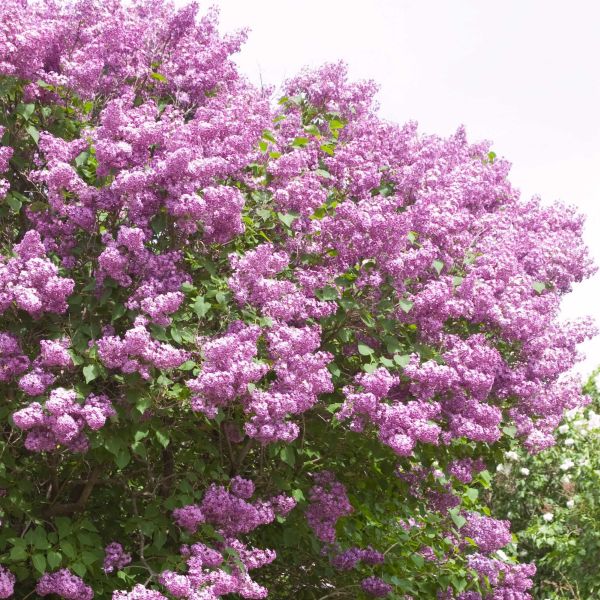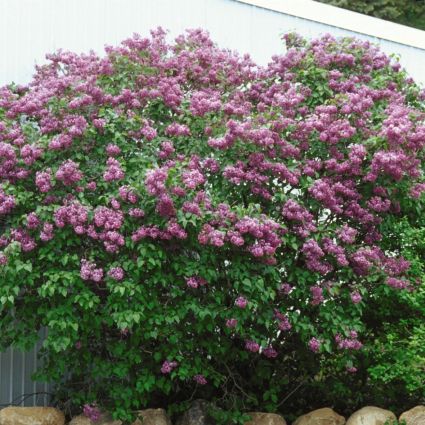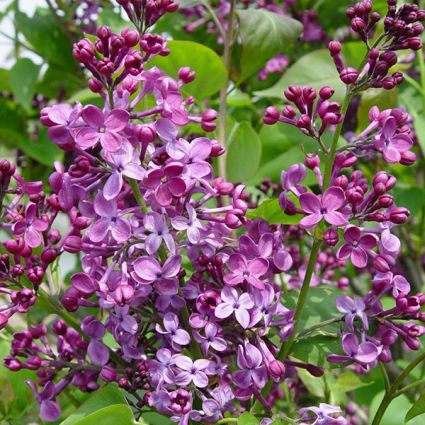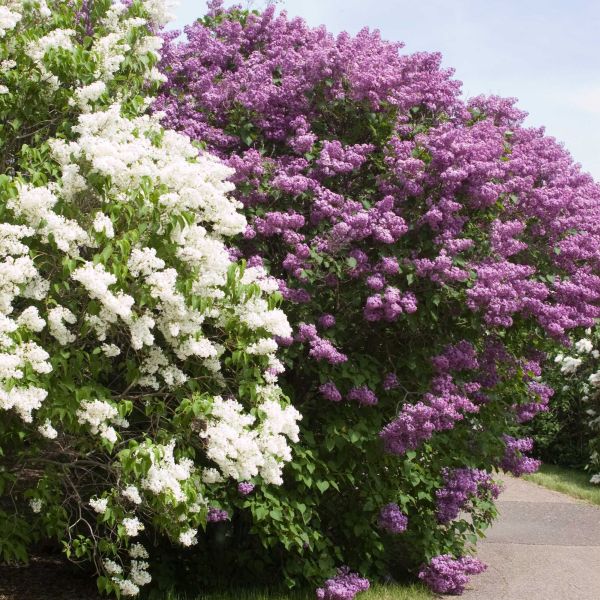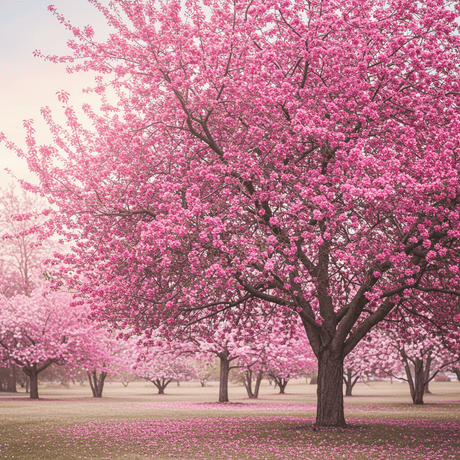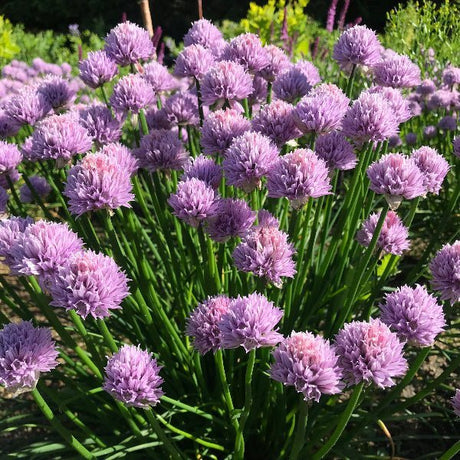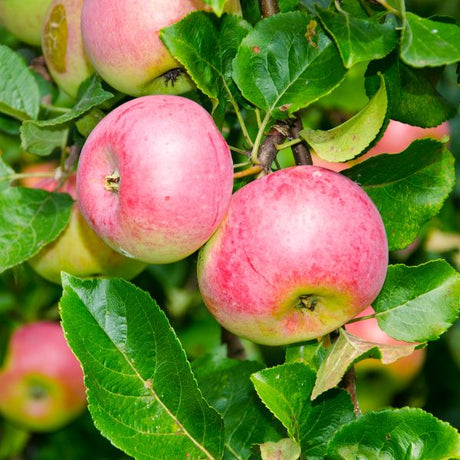Pocahontas Lilac
Syringa x hyacinthiflora 'Pocahontas'
- Stay Protected with Plant Sentry ™
Pocahontas Lilac - #3 Container is backordered and will ship as soon as it is back in stock.
Plant Sentry™
Plant Sentry™

Plant Sentry™ Protected
Your order is protected by our compliance system that:
- Prevents restricted plants from shipping to your state
- Ensures plants meet your state's agricultural requirements
- Protects gardens from invasive pests and diseases
Delivery and Shipping
Delivery and Shipping
Delivery and Shipping
Fast, Safe Plant Delivery
Ships in 3-4 business days • Tracking provided • Weather protected
| Under $50 | $9.99 |
| $50 - $99.99 | $14.99 |
| $100 - $149.99 | $16.99 |
| $150 - $198.99 | $24.99 |
| $199+ | FREE |
✓ Zone-specific timing • ✓ Professional packaging • ✓ Health guarantee
Understanding Plant Options
Nature Hills offers plants in two main formats:
- Container Plants: Grown in pots with soil, sized by container volume and plant age
- Bare Root Plants: Dormant plants without soil, sized by height measurements
Container Plant Sizes
Container sizes indicate plant age and growing capacity rather than liquid volume equivalents. Our containers follow industry-standard nursery "trade gallon" specifications, which differ from standard liquid gallon measurements.
Young Plants (6 months to 18 months old)
| Container Size | Actual Volume | Metric Equivalent |
|---|---|---|
| 2" x 2" x 3" | 0.18 - 0.21 dry quarts | 0.20 - 0.23 dry liters |
| 4" Container | 0.31 - 0.87 dry quarts | 0.35 - 0.96 dry liters |
| 4.5" Container | 0.65 dry quarts | 0.72 dry liters |
| 6" Container | 1.4 dry quarts | 1.59 dry liters |
| 1 Quart | 1 dry quart | 1.1 dry liters |
| 5.5" Container | 1.89 dry quarts | 2.08 dry liters |
Established Plants (18 months to 2.5 years old)
| Container Size | Actual Volume | Metric Equivalent |
|---|---|---|
| 2 Quart | 2 dry quarts | 2.2 dry liters |
| #1 Container | 2.26 - 3.73 dry quarts | 2.49 - 4.11 dry liters |
| 5" x 5" x 12" | 3.5 - 4.3 dry quarts | 3.85 - 4.74 dry liters |
Mature Plants (2-4 years old)
| Container Size | Actual Volume | Metric Equivalent |
|---|---|---|
| #2 Container | 1.19 - 1.76 dry gallons | 5.24 - 7.75 dry liters |
| #3 Container | 2.15 - 2.76 dry gallons | 8.14 - 12.16 dry liters |
Large Plants (3-5 years old)
| Container Size | Actual Volume | Metric Equivalent |
|---|---|---|
| #5 Container | 2.92 - 4.62 dry gallons | 12.86 - 20.35 dry liters |
| #6 Container | 5.25 - 6.01 dry gallons | 23.12 - 26.42 dry liters |
| #7 Container | 5.98 - 6.53 dry gallons | 26.34 - 28.76 dry liters |
Bare Root Plants
Bare root plants are sold by height from the root system to the top of the plant. Plants may exceed minimum height requirements.
Common Sizes:
- Trees: 1 foot, 2 feet, 3 feet, 4 feet, 5 feet, 6 feet
- Shrubs & Perennials: 1 foot, 18 inches, 2 feet
Important Notes
Container Volume Specifications
- Trade Gallon Standard: Our containers follow industry-standard "trade gallon" specifications established by the American National Standards Institute (ANSI Z60.1) for nursery stock
- Volume Variations: Actual soil volume may vary due to plant root systems and growing medium settlement
- Age Indicators: Container size primarily indicates plant age and maturity rather than liquid volume equivalents
Growing Conditions
- Plant size can vary based on variety and growing conditions
- Container size helps indicate plant maturity and establishment level
- Larger containers generally mean more established root systems and faster landscape establishment
Seasonal Availability
- Bare root plants are available seasonally when dormant
- Container plants are available throughout the growing season
- Specific varieties may have limited availability in certain sizes
Questions?
For questions about specific plant sizes or availability, please contact our plant experts who can help you choose the right size for your landscape needs.
Plant Highlights
Pocahontas Lilac highlights at a glance!
-
Plant Class
-
Botanical Name
-
Brand
-
Growing Zones2, 3, 4, 5, 6, 7
-
Growth RateModerate
-
Mature Height
-
Mature Width
-
Leaf Color
-
Flower Color
-
Fall Color
-
Pollinator FriendlyYes
-
Pollinator Required
-
Bloom PeriodEarly Spring, Late Spring
-
FragrantYes
-
Does Not Ship To
Characteristics
Where To Plant
When To Prune
- Late Spring
Water & Moisture Needs
- Moderate
Sunlight Needs
Soil Needs
- Well Drained
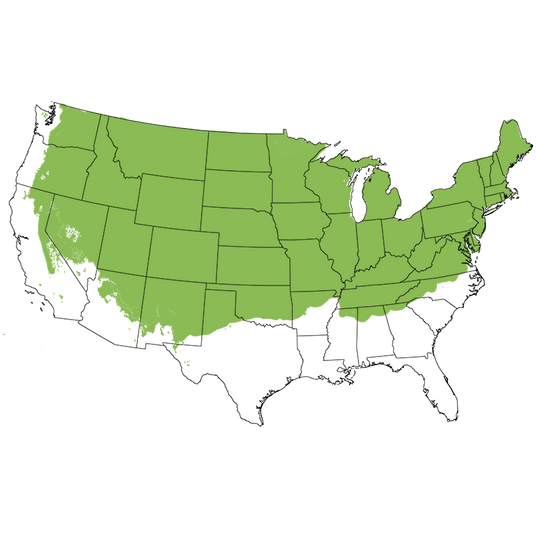
Growing Zones 2-7
Your garden space is too precious for mediocre Lilac varieties. If you're looking for a top performer when it comes to bloom coloration and flower count the Pocahontas Lilac (Syringa x hyacinthiflora 'Pocahontas') is a top contender. This striking, tall, and dramatic Lilac bursts onto the spring scene with a profusion of deep violet flowers that fill the air with the enchanting scent of spring.
The Pocahontas is a stately Lilac that creates a stunning display of deep purple flower buds. This variety blooms in early spring and opens to reveal even more opulent popping purple-colored florets. As these blooms open, you will notice that Pocahontas Lilac clusters take on an ombre of pinks and purples.
Prepare your camera. You will want to take pictures of these winged wonders as they pause among the clusters of dripping Lilacs. Not only is this Lilac known for its ample blooms that are unimaginably dark, but it also features even green foliage and a vigorous growth habit. You will have trouble deciding if you prefer the lavished spectacle of these flowers from a distance or the intricate, heart-shaped blooms and leaves up close. Luckily, you can appreciate both.
The fragrant blooms of this dark beauty cannot wait to show off its uniquely hued blooms and blooms two weeks earlier than French hybrids. Its blissfully deep buds will excite you and you'll wait alongside hummingbirds, bees, and butterflies in anticipation for the Pocahontas Lilac's heavenly scent as each of its striking blooms opens. The heart-shaped leaves are a lush green and hold their color until fall.
Planting and Application:
Use it as a beautiful way to block the view of your neighbors as a screen. Or take advantage of its energetic growth habit and plant several ten feet from the back of your patio as an informal hedge. The rich hues of the Pocahontas Lilac make it a breathtaking addition as a back border, anchor planting and anywhere you can admire it from afar and up close.
Lilacs are a fantastic privacy screen with big benefits! Use a series of staggered rows to fill a wide, open area with magnificent spring blooms while blocking noise, prying eyes and slowing wind. You'll love the billowy, easy-breeze sense of privacy all season long. Create a mixed Lilac border for varied blooms and extended bloom times all spring!;
Add a few to your cottage border, behind a perennial garden and are must-haves to include in the cutting garden for plenty of fresh materials. Don't miss out on the dazzling beauty and alluring scent of the outstanding garden accents. Don't go another spring without a prolific source of fabulous Lilac blooms.
- Blooms 2 Weeks Earlier Than French Hybrids
- Great Windbreak & Privacy
- Violet Panicle Blooms
- Early Blooming Pollinator Plant
- Deciduous Shrub - Great Fall Color
#ProPlantTips for Care:
The Pocahontas Lilac likes to dance in the sunshine and keep its feet dry with fast-draining soil. Plant Lilacs in enriched organic soil with moderate moisture access for best results. If you use nitrogen fertilizer, avoid getting any near the root ball. Mulch the area well so you won't have to worry about any lawn fertilizer around the base of this plant.
Deer-resistant so you'll be saved the time and trouble of dealing with costly measures to keep it safe from harm. If you live with deer in your area, apply repellent spray on planting day. Deer are hungry and curious, and you want to train them to leave your plants alone. Reapply according to the label.
Air circulation is important for Lilacs, so find a breezy place for them to perform at their best. It's best to avoid low spots or heavily enclosed locations that trap airflow. Fertilize in early spring and again in mid-summer with Dr. Earth Organic and All Purpose Fertilizer, following directions on the package.
Avoid removing the blooms or pruning the plant at any time except immediately after the flowers fade, to prevent removing next year's flowers. Don't miss a single bloom! Follow these easy Pruning steps for the best flowering. You can prune these flowering shrubs into small multi-stemmed tree-form for a unique specimen and garden highlight!
- Full Sun
- Easy to Grow & Low Maintenance
- Adaptable to Many Soil Types
- Moderate Moisture & Mulched Beds
- Prune After Flowering
Let the Pocahontas Lilac show you the way with its glittering, shining, sweet-smelling blooms. Order yours at NatureHills.com while we still have them in stock.
Frequently Asked Questions
How big do Lilacs get?
A Lilac bush can obtain a mature height of around 8 - 12 feet and a mature width of 8 - 10 feet. You can easily prune them to any size or shape you need with annual trimming.
How fast do Lilacs grow?
Lilacs have a medium growth rate and one might see 1 - 2 feet of new growth per year in optimal growing conditions.
Is Lilac a tree or a bush?
Lilacs are shrub-form plants that can be pruned into small tree-form specimens if desired. They are typically sold with their lower limbs intact and have multi-stemmed/multi-trunked growth naturally.
Which is the most fragrant Lilac?
Lilac's iconic scent lasts for a week or more after they've opened and some of the most fragrant (arguably) are the Beauty of Moscow, President Grevy, the yellow Primrose and the Sensation Lilac!
What shipping options do you offer?
NatureHills.com works closely with our growers and nursery professionals to ensure we ship when it is most appropriate for your area. Our goal is to deliver the hardiest plants by avoiding extreme high and low temperatures. Check out our shipping schedule for more information and to learn our wills and won'ts when it comes to shipping plants. Find your Lilac Bushes for sale here at NatureHills.com!

